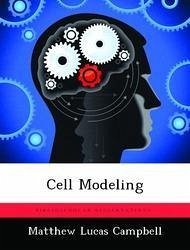The Air Force is currently developing new products that incorporate a variety of chemicals which may come in contact with product users. To define which chemicals are dangerous to the user, toxicity studies have been performed. However, analysis of toxicity ultimately requires models of the exposed cellular systems. This thesis provides an introduction of how to model and analyze small and large cellular systems. Understanding the underlying behavior of small models and their relation to large systems will lead to a better understanding of how the Air Force should construct intracellular models to assist in future toxicology studies.Developing analysis techniques to include steady state analysis through linearization, and then considering small reaction systems, such as the Brusselator and Schnackenberg models, led to a basic understanding of model behavior. This knowledge was applied to create new models in an effort to begin a transition from previously created models to the construction of models unique to the Air Force.
Hinweis: Dieser Artikel kann nur an eine deutsche Lieferadresse ausgeliefert werden.
Hinweis: Dieser Artikel kann nur an eine deutsche Lieferadresse ausgeliefert werden.








